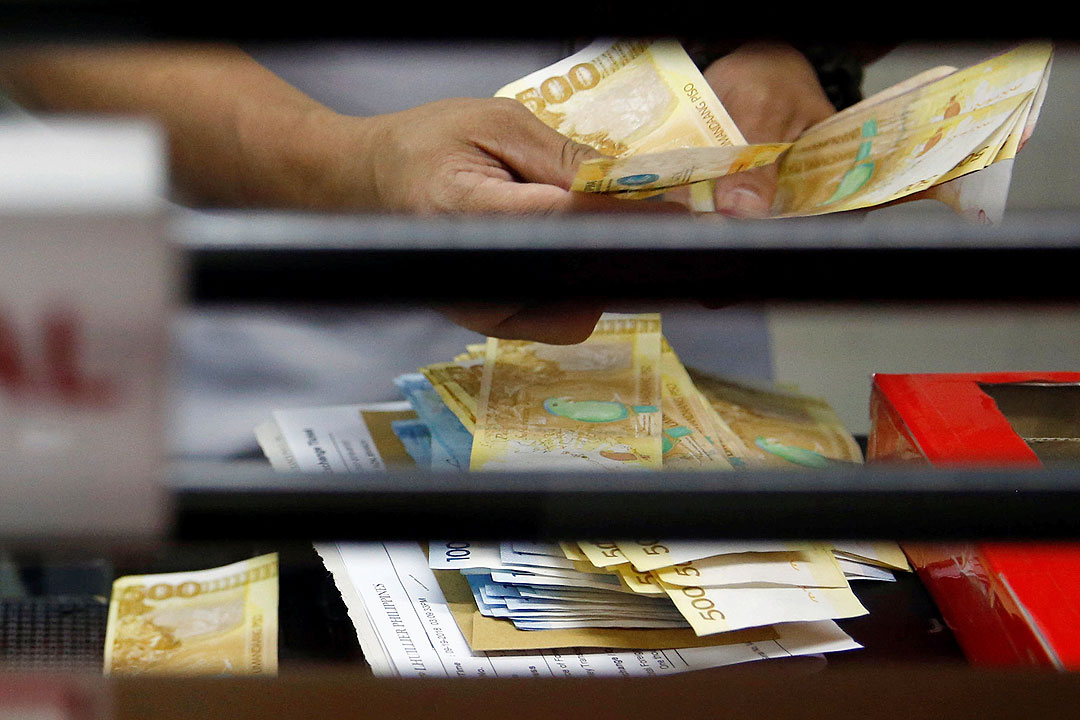
PHILIPPINE BANKS’ bad loan ratio eased to a three-month low in March as total loans increased, according to data from the Bangko Sentral ng Pilipinas (BSP).
The industry’s gross bad loan ratio dipped to 3.3% from 3.38% in February and 3.39% a year earlier.
Bad loans inched up 0.5% to P516.12 billion at end-March from a month earlier and climbed 11.1% from a year ago.
Loans are considered nonperforming once they remain unpaid for at least 90 days after the due date. They are risky assets because borrowers are unlikely to pay.
The loan portfolio of the Philippine banking system rose 3% to P15.63 trillion as of end-March from a month earlier and by 14.2% from a year earlier.
Past due loans were up by 1.3% to P646.37 billion as of March from a month earlier and 9.8% more than a year ago. This brought the past due loan ratio to 4.14% from 4.2% in February and 4.3% a year earlier.
Restructured loans edged up 0.1% to P311.48 billion in March from February and by 5.7% year on year.
Restructured loans accounted for 1.99% of the industry’s total loans from 2.05% a month earlier and 2.15% a year ago.
Banks’ loan loss reserve hit P490.56 billion in March, up 0.2% month on month and 4.9% year on year. This brought the loan loss reserve ratio to 3.14% from 3.23% at end-February and 3.42% in March 2024.
Lenders’ bad loan coverage ratio, which gauges the allowance for potential losses due to bad loans, slipped to 95.05% in March from 95.36% in February and 100.66% a year ago.
Reinielle Matt M. Erece, an economist at Oikonomia Advisory and Research, Inc., attributed the lower nonperforming loan (NPL) ratio to faster bank lending growth.
“As the NPL ratio is simply dividing the NPL amount to total loan growth, faster lending growth may reduce the ratio,” he said in a Viber message.
Outstanding loans of universal and commercial banks rose 11.8% to P13.19 trillion from a year ago, the central bank earlier said.
Michael L. Ricafort, chief economist at Rizal Commercial Banking Corp., said the double-digit growth in bank loans “effectively expanded the denominator, thereby mathematically reducing the NPL ratio.”
Earlier BSP data showed bank lending rose 11.8% year on year to P13.19 trillion in March.
Mr. Ricafort said rate cuts by the central bank reduced financing costs and improved borrowers’ ability to pay back their loans.
“Possible further rate cuts by the BSP, especially additional rate cuts of 75 basis points (bps) for the rest of 2025 would further reduce borrowing costs,” he said. “That would help improve the payment of loans and debts, thereby helping the easing trend of banks’ NPL ratio.”
BSP Governor Eli M. Remolona, Jr. has said they are open to cutting rates by 75 bps more this year amid easing inflation.
The Monetary Board last month resumed its rate-cutting cycle with a 25-bp cut, bringing the benchmark to 5.5%. The BSP has reduced rates by 100 bps since it kicked off its easing cycle in August last year.
“It is still important to note that despite 2025 posting faster growth in lending compared with 2024, it is starting to lose momentum compared with its fastest growth in January,” Mr. Erece said.
“This is where monetary policy easing may help in boosting lending as well as economic activity,” he added. — Luisa Maria Jacinta C. Jocson